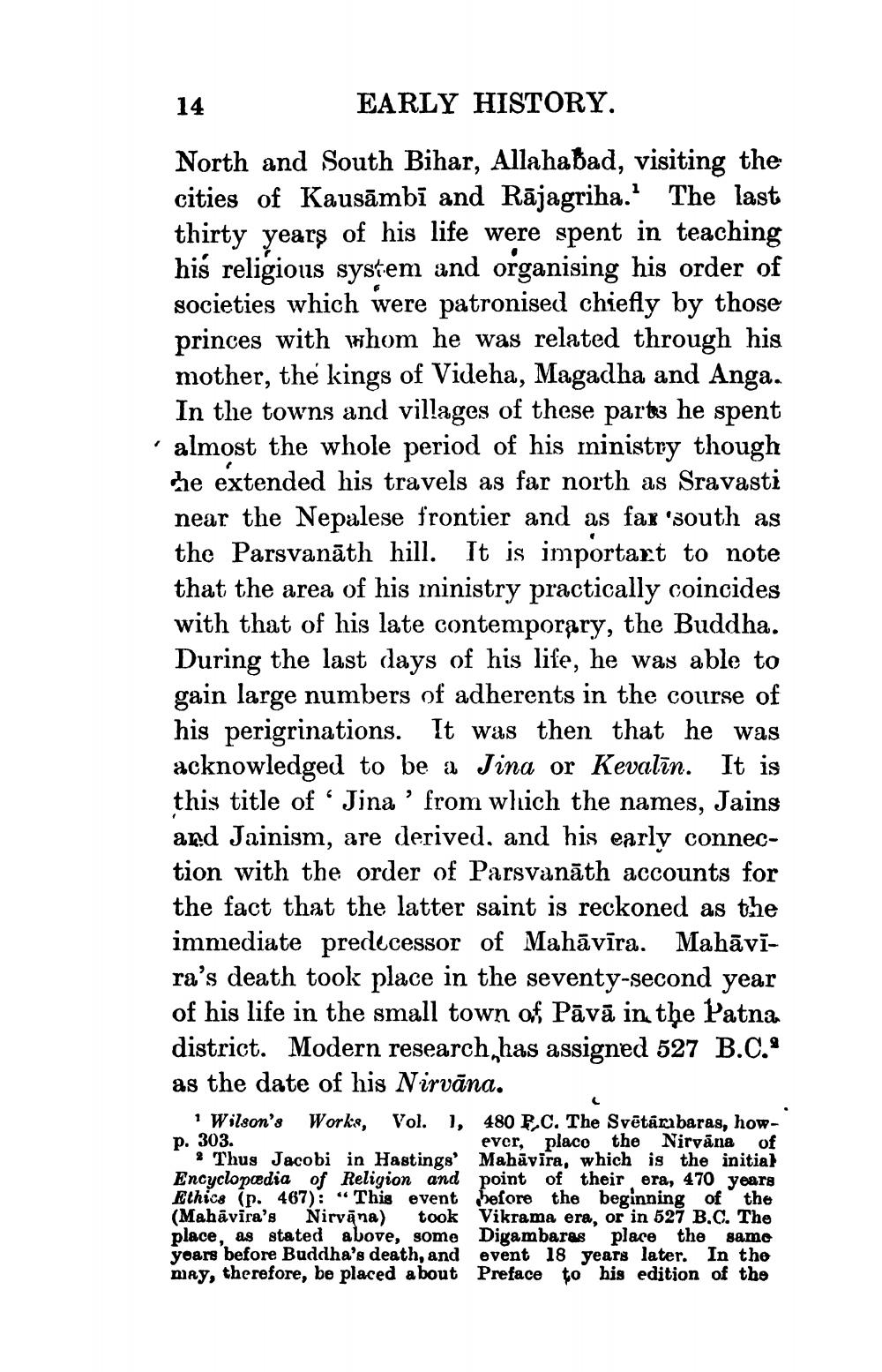________________
14
EARLY HISTORY.
North and South Bihar, Allahabad, visiting the cities of Kausāmbī and Rājagriha.' The last thirty years of his life were spent in teaching his religious system and organising his order of societies which were patronised chiefly by those princes with whom he was related through his mother, the kings of Videha, Magadha and Anga.
In the towns and villages of these parts he spent · almost the whole period of his ministry though che extended his travels as far north as Sravasti near the Nepalese frontier and as far 'south as the Parsvanāth hill. It is importart to note that the area of his ministry practically coincides with that of his late contemporary, the Buddha. During the last days of his life, he was able to gain large numbers of adherents in the course of his perigrinations. It was then that he was acknowledged to be a Jina or Kevalīn. It is this title of ' Jina ’ from which the names, Jains and Jainism, are derived, and his early connection with the order of Parsvanāth accounts for the fact that the latter saint is reckoned as the immediate predecessor of Mahāvīra. Mahāvīra's death took place in the seventy-second year of his life in the small town of Pāvā in the Patna district. Modern research has assigned 527 B.C.. as the date of his Nirvāna.
1 Wilson's Works, Vol. 1, 480 P.C. The Svētārabaras, howp. 303.
ever, place the Nirvana of % Thug Jacobi in Hastings' Mahāvira, which is the initia) Encyclopaedia of Religion and point of their era, 470 years Ethics (p. 467) “This event before the beginning of the (Mahavira's Nirvāna) took Vikrama era, or in 527 B.C. The place, as stated above, some Digambaras place the same yoars before Buddha's death, and event 18 years later. In the may, therefore, be placed about Preface to his edition of the




